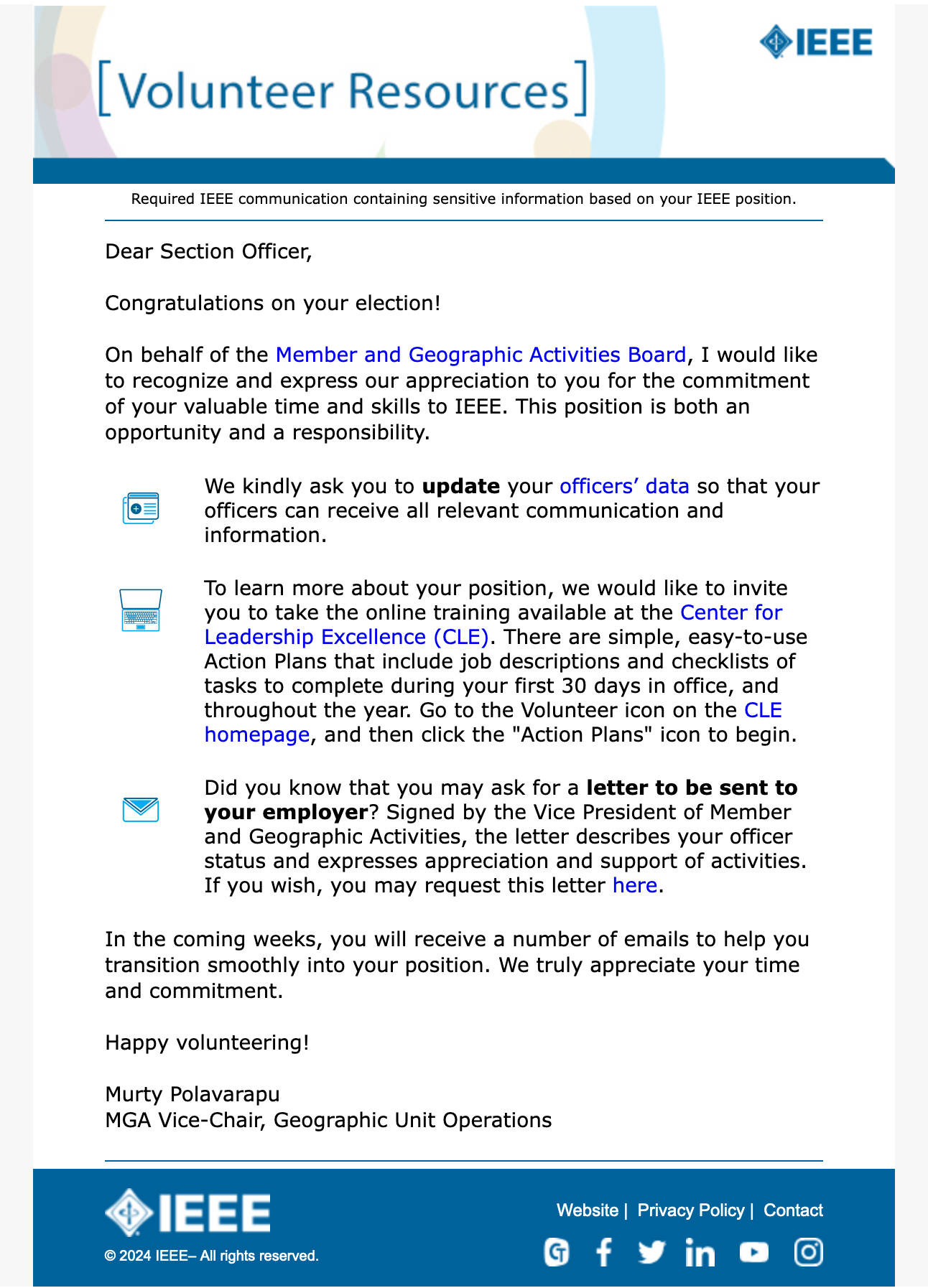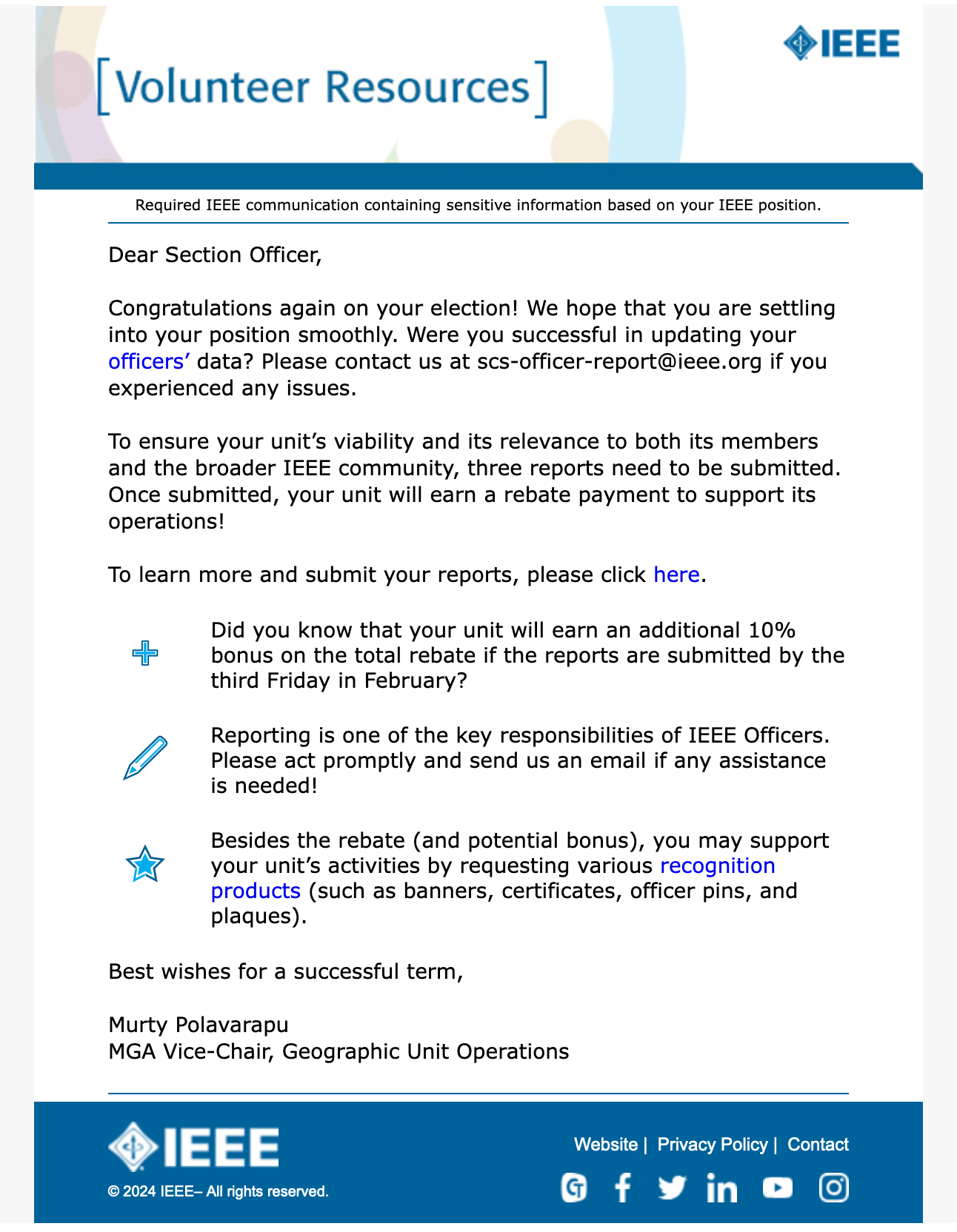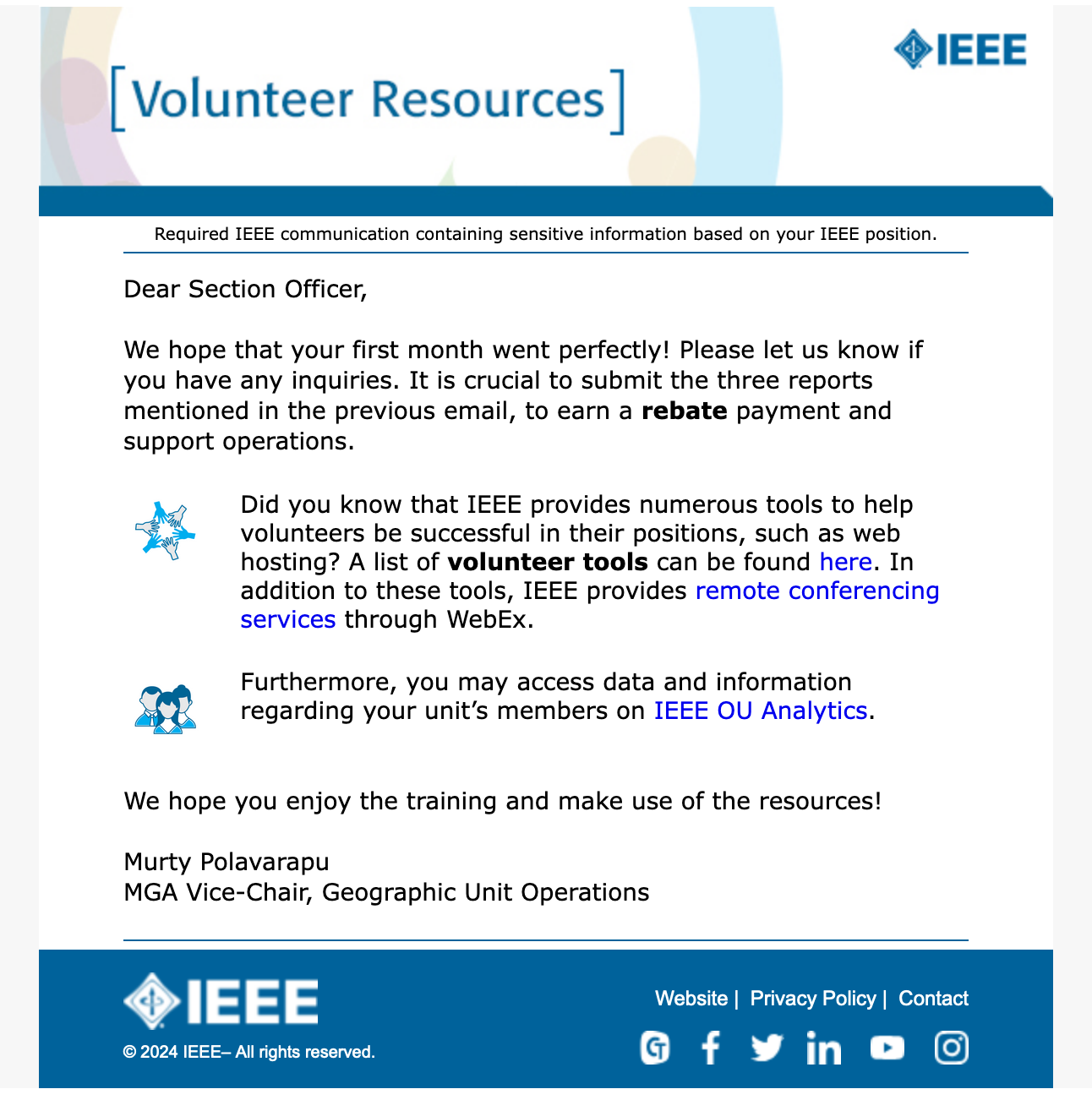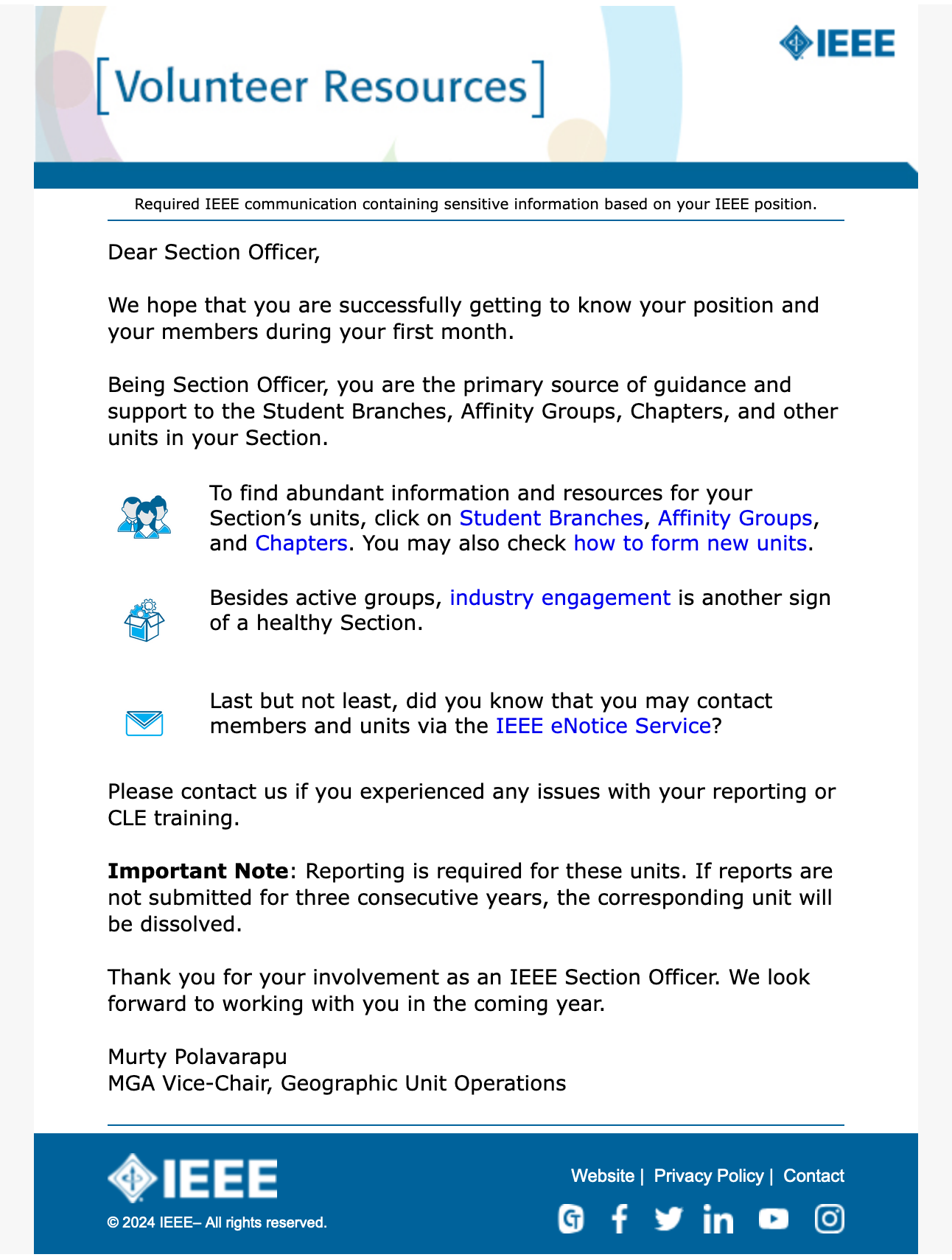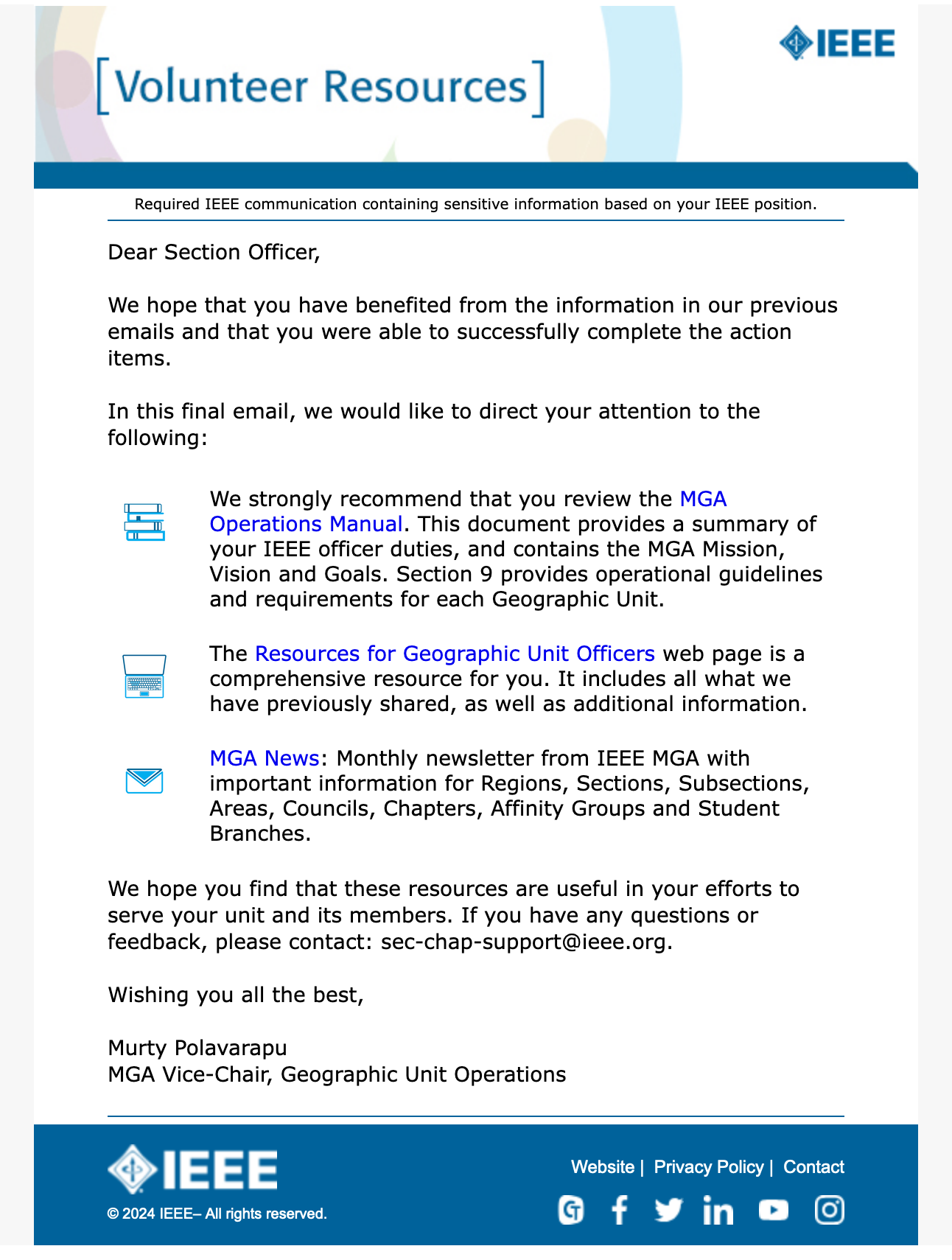Councils
- Details
- Category: Geographic Units and Groups
A Council may be formed by agreement of a group of contiguous Sections, and it exists at their pleasure. It is intended to act as a subordinate committee of the Sections, and they have the right to direct its operation. It is formed by the Sections to do only those delegated tasks that can be best done together by the Sections rather than singly by each Section. The Sections retain their recognition as the basic operating, executive, and administrative unit of IEEE. The Region Director and the MGA Board shall approve the formation of a Council.
Definition
- Definition
- Existing Councils
Existing Councils
- Councils are formed by a group of contiguous Sections. There are currently 19 with in IEEE.
Sections
- Details
- Category: Geographic Units and Groups
An IEEE Section is a fundamental organizational unit within the IEEE, operating at the regional level and comprised of a minimum of 50 IEEE voting members. Established with MGA Board approval, Sections aim to meet the professional needs of members, advancing theory and practice in designated IEEE fields while maintaining high standards. Managed exclusively by IEEE members, Sections may collaborate with other organizations for joint activities with approval. Multiple Sections can form a Council with its own bylaws, subject to MGA Board provisions.
- Definition
- Existing Chapters
- Section Volunteer Officers Onboarding Plan
- Access your membership data online using OU Analytics
- OU Analytics - Screenshots & Instructions
Definition
- The Section shall have for its purpose the advancement of the theory and practice of IEEE designated fields and the maintenance of high professional standards among its Members.
- All Sections shall be exclusively those of IEEE. Management of an IEEE Section shall be exclusively by IEEE members and not jointly with members of any other organization, society, or group.
Existing Sections
-
Sections are Geographic Units with in a Region. There are currently 344 Sections within IEEE.
Section Volunteer Officers Onboarding Plan
Access Your Membership Data using OU Analytics
Screenshots & Instructions
IEEE OU Analytics, is a web-based tool which delivers essential metrics on memberships and subscriptions to OUs, including Societies, Councils, Chapters, etc. Volunteers in respective OUs have automatic access to their OU's data (e.g. Chapter officers have access to their chapter’s membership data.The landing page provides to various dashboards which contain filters to refine by OU, Region, Section, Grade, and Gender. Counts can link directly to respective member contact details. The capability to search for one member within the member details listing is also available.
The OU Analytics Geo Map provides geographic displays and interactive dashboard views of IEEE organization units, including Chapters. The map also provides membership density to identify potential society chapters and student branches globally. Data is updated daily. Data and images can be downloaded using various formats. You will need your IEEE Account information to access. Training materials are available at www.ieee.org/ouanalytics.
For more information on how to use OU Analytics, please email ouanalytics@ieee.org or tad-chap-dev@ieee.org.
OU Analytics - Screenshots & Instructions
View detailed instructions to obtain membership data and reporting needs.
Local Groups
- Details
- Category: Geographic Units and Groups
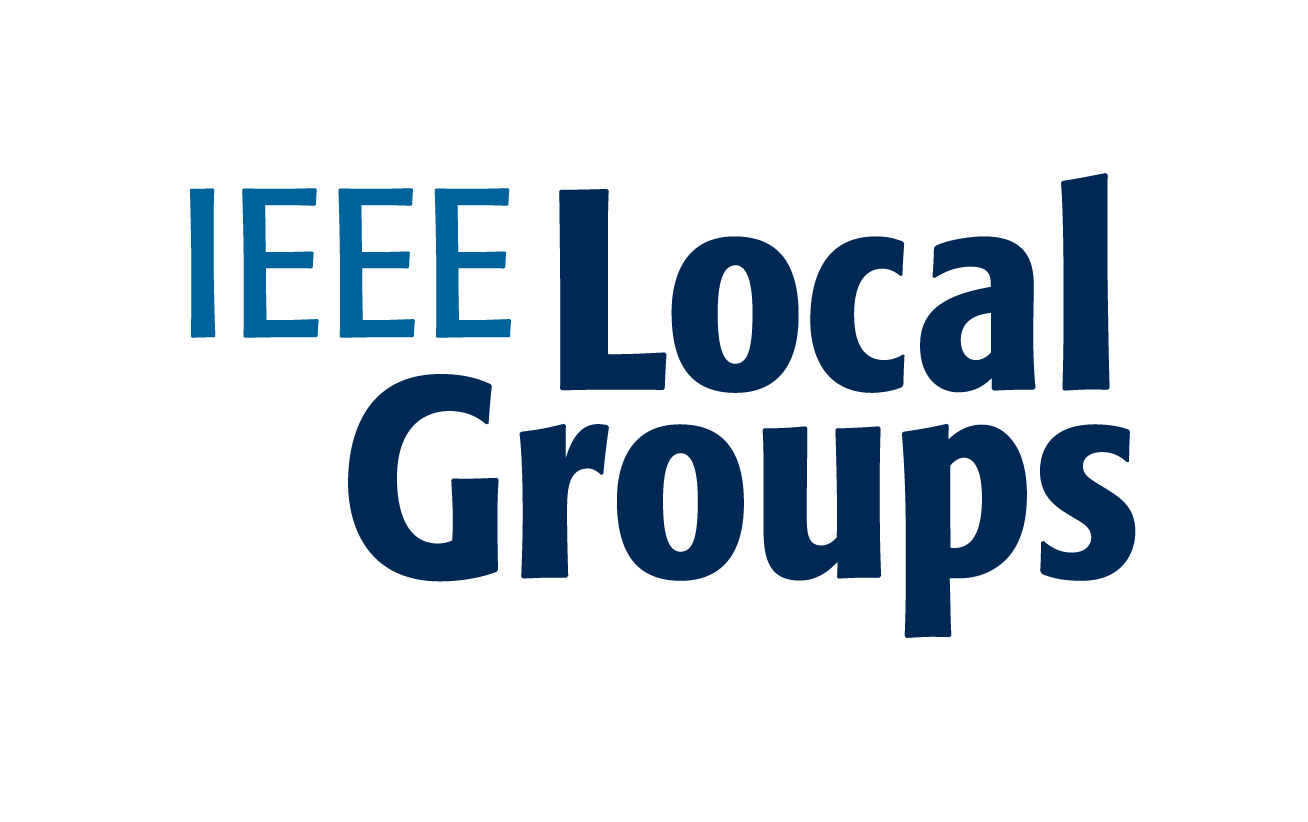
DO YOU WANT TO...
Re-energize your Section? Respond quickly to a new need, trend or an emerging topic? Start, create and engage your members? Lay the groundwork for starting a new Chapter? Involve IEEE members and non-members? Have multiple similar groups within your Section? Strengthen and recognize industry/academic/ government collaboration? Focus on local interests but also connect with worldwide similar groups? Discover, explore and track new trends with geographic and/or technical relevance? Involve people in technical and non-technical interests? If you answered “Yes” to any of the above, then a Local Group is your next move.
What is a Local Group?
Local Groups are a new IEEE concept. They are a low overhead, agile, and efficient way for a Section (or a Region, if there is no Section in the area) to serve the interests of members and potential members in the area. Local Groups can be organized around any area of interest to IEEE, especially including interdisciplinary areas, but cannot operate in competition with any other IEEE unit. They are organized with the agreement of a Section and if no longer viable may be dissolved by the Section. People who are not IEEE members may belong to a Local Group.
What does it take to start a Local Group?
A Local Group may be started by a minimum of two IEEE members who will act as the initial organizers and leaders of the group, both of whom are members of the Section involved. As outlined in the MGA Operations manual 9.12, at least one of these leaders must be a voting member (Graduate Student Member or higher grade). All officers must be IEEE members. Local Groups must include a minimum of two IEEE members and must hold at least two meetings a year. If the group becomes inactive, the Section may dissolve it.
To learn more about Local Groups contact us at localgroups@ieee.org
Benefits of a Local Group?
Local Groups are intended to be an agile and efficient way for a Section or Region to meet the needs of its members. Therefore, there is minimal overhead involved in starting and running a Local Group, just enough for IEEE to track their creation and activity. The process begins with a petition to form the Group made via vTools.
Some examples of Local Groups include:
|
Climate Change |
STEM |
Impact of EVs |
|
Blockchain |
Industry Engagement |
Technology History |
|
Entrepreneurship |
Cyber Security |
AI — ChatGPT |
Local Group Activities
Local Groups can meet and organize events, lectures, seminars, workshops .and other activities, both in-person and virtually, provided they are local. Some benefits of starting a Local Group:
- Meeting and interacting with people with the same interest
- Discovering similar groups around the world
- Engaging IEEE members who are not society members
- Getting recognition for leadership skills
- Broadening impact by including IEEE members and non-members
- Publicizing and reporting meetings, events, workshops, lectures and seminars
2024 Local Group Working Group
| Costas Stasopoulos - Chair |
| Ramesh Ramadoss |
| Maike Luiken |
| Ron Jensen |
| Francis Grosz |
| Magdalena Palma |
| Kazuhiro Kosuge |
| William Wylie |
Regions
- Details
- Category: Geographic Units and Groups
Chapter Data
- Details
- Category: Geographic Units and Groups
Screenshot instructions to obtain membership data and reporting needs via IEEE OU Analytics
Data must be used for IEEE purposes only and in compliance with GDPR regulations and the IEEE Data Access and Use Policy.
Obtain member counts and member details for Society and Technical Council Chapters. Chapter Chairs have access to view their Chapter member counts and member details.
- Society Chapter Member Counts/Lists (PDF, 751 KB)
- Council Chapter Member Counts/Lists (PDF, 673 KB)
Identify Sections with a minimum of 12 eligible Society members for potential Chapter formation
- Potential Society Chapter Lists (PDF, 567 KB)
Obtain the count of Chapters by type (i.e., Chapter, Joint Chapter, Student Branch Chapter)
- Society Count of Chapters by Type (PDF, 816 KB)
- Council Count of Chapters by Type (PDF, 796 KB)
Obtain Chapter officers (i.e., Chair, Vice Chair, Secretary, Treasurer)
- Society Chapter Officers (PDF, 748 KB)
-
Council Chapter Officers (PDF, 795 KB)
Obtain the count of overlapping memberships/participations between IEEE Societies, Technical Councils, Technical Communities, IEEE Consultants Network, Standards Association, Women in Engineering, and Young Professionals. Counts displayed represent the intersection between the two organizational units.
- Doublet (PDF, 570 KB)
Product Deletion: Members who renewed their IEEE membership and cancelled (deleted) their Society membership during the current renewal year.
Arrears: Members who have not renewed for the current renewal year are placed into Arrears as part of the Service Deactivation process at month-end February.

